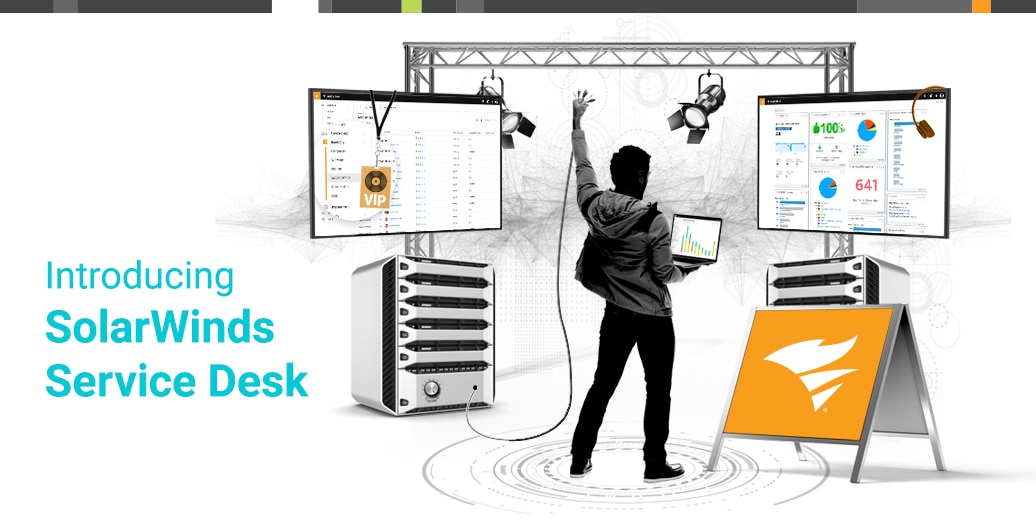The start of a new year brings the familiar sentiments of “New Year, New Me!” or in 2021’s case, “New Year, New Perspective.” Ushering in a new year provides an outlet for personal reflection but it’s also a time for organizations to review and establish their business objectives.
As the new year kicks off, perhaps one of your organizational goals is to invest in a new
IT Service Management (ITSM) solution. You've identified your current method for ticket intake and tracking isn’t meeting your business’s needs, offering the chance to start fresh and invigorate how you deliver various services. Despite the opportunity and promise for change, it can feel overwhelming to outline your plan to evaluate and implement a new tool. Where is the best place to begin?
When teams pivoted to remote operations in 2020, we witnessed IT rapidly retool their service management strategies to accommodate their employees’ new work realities. As the year unfolded it became clear how instrumental a
service desk platform is in digitizing and fulfilling services, providing knowledge content, and maintaining routine support to a business. Beyond accelerated
digital transformation, the service desk helped internal service providers maintain a connection to their employees, which morphed service delivery strategies to be more employee focused.
Review Service Desks of Past, Present, and Future
Similar to embracing the new year, evaluating ITSM platforms requires you to examine the past, present, and future. Take a page from the
ITIL guiding principle “start where you are” to identify strengths and opportunities for improvement.
Start by reviewing your organization’s service management experiences and historical data. Previous interactions can supply context into what worked well or where there were gaps in service. Working beyond previous engagements fuels insight into your existing operations. Build reports and leverage data to further understand how your current service desk is performing. With insights into the volume of requests, average response time or time to closure, and even feedback around services, your users can help to define your current baseline.
Leveraging
metrics from your current service desk footprint empowers you to define more data driven objectives as you pursue a new solution. As you refine your service management roadmap, find ways to align those goals with the organization’s culture. What do you want to achieve with a new ITSM platform? How will you educate users around its value? What steps need to be taken so the service desk is seen as an integral resource?
Your existing service management footprint and trajectory for service growth can serve as the springboard for your
ITSM evaluation.
A Roadmap for Your Assessment
Having established a holistic and employee-focused service management strategy for the future, outline the milestones for your evaluation. Consider how you can incorporate the following elements into your project plan:
- Identify stakeholders
- Establish requirements for a new solution
- Determine if a proof-of-concept (POC) is required and what it would look like
- Define criteria for success and selection
Craft your evaluation with these considerations in mind to help keep you organized throughout the process. As initial planning gets underway, identify who will be spearheading the evaluation and selection of a new solution. Those involved may range from the service desk manager to the chief technology officer and potentially other internal service providers, like
Facilities, who have indicated a need for a shared service management platform. Established stakeholders further mold the specifications needed in a new service desk.
Defining these elements can be valuable in promoting more effective project timelines and determining how you leverage your human resources. By understanding the people and departments involved, paired with overarching goals and metrics for success, you can better delegate responsibilities and create a viable path for choosing a new solution.
Maximize Your Evaluation
An effective evaluation and POC can benefit your team beyond the selection process. Incorporating multiple stakeholders through measured steps when choosing a new ITSM solution can accelerate your time to value when implementing your service desk of choice. A thorough examination enables key parties to become educated on the new platform, helping them to understand how to ideally configure and customize the ITSM solution in alignment with the organizational culture. Future service desk administrators can also apply their findings and experiences from the evaluation to map out the phases for a successful
implementation.
Settling into the new year and taking on an ITSM evaluation doesn’t have to be intimidating! Use this time to reflect on the past and set targets for the future, while finding opportunities to strengthen core organizational values and business relationships for long-term success.







